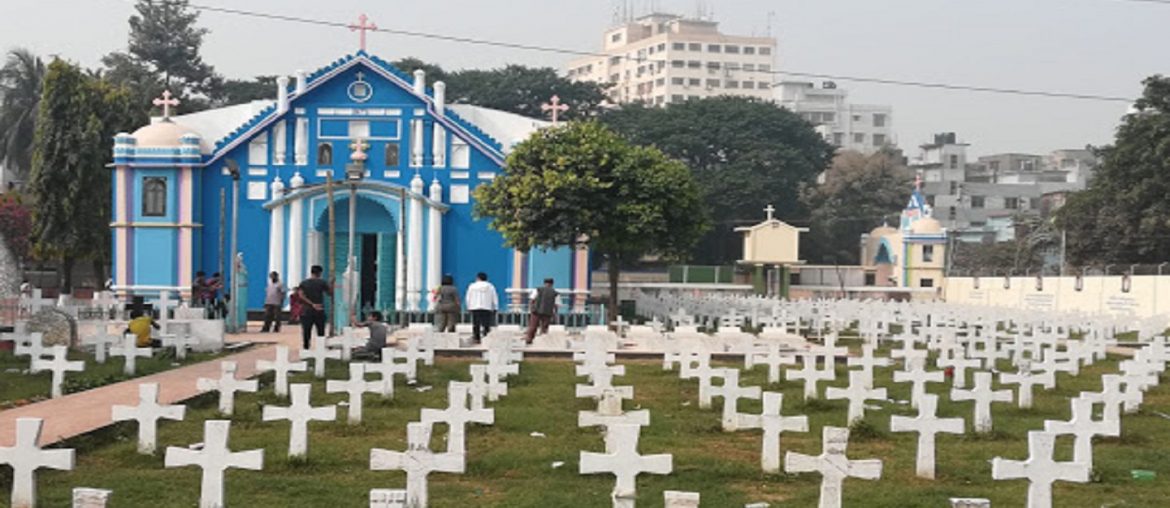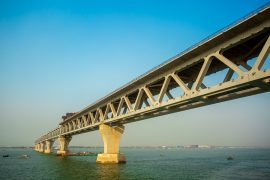‘নোনা দেয়াল থেকে,
যীশু ছলছল চোখে,
হাত তুলে আশ্বাস দেয় এখনো!’
About 10 years ago, when I used to go to school, I used to stare in awe at the blue and white church. And these lyrics from Anjan Dutta’s song Mary Ann used to play in the back of my head. A lot of time has passed since those days. But whenever I hear the church bells of a distant church, or pass through a church square, those memories come back to me. Throughout the world, there are many churches that are admired because of their history and architecture. People come from all over the world to visit these churches. Bangladesh also has a few such historic churches. In the first part of the series ‘ A Look Back At History’, we will be exploring some of the most historic churches in Bangladesh.
Armenian Church
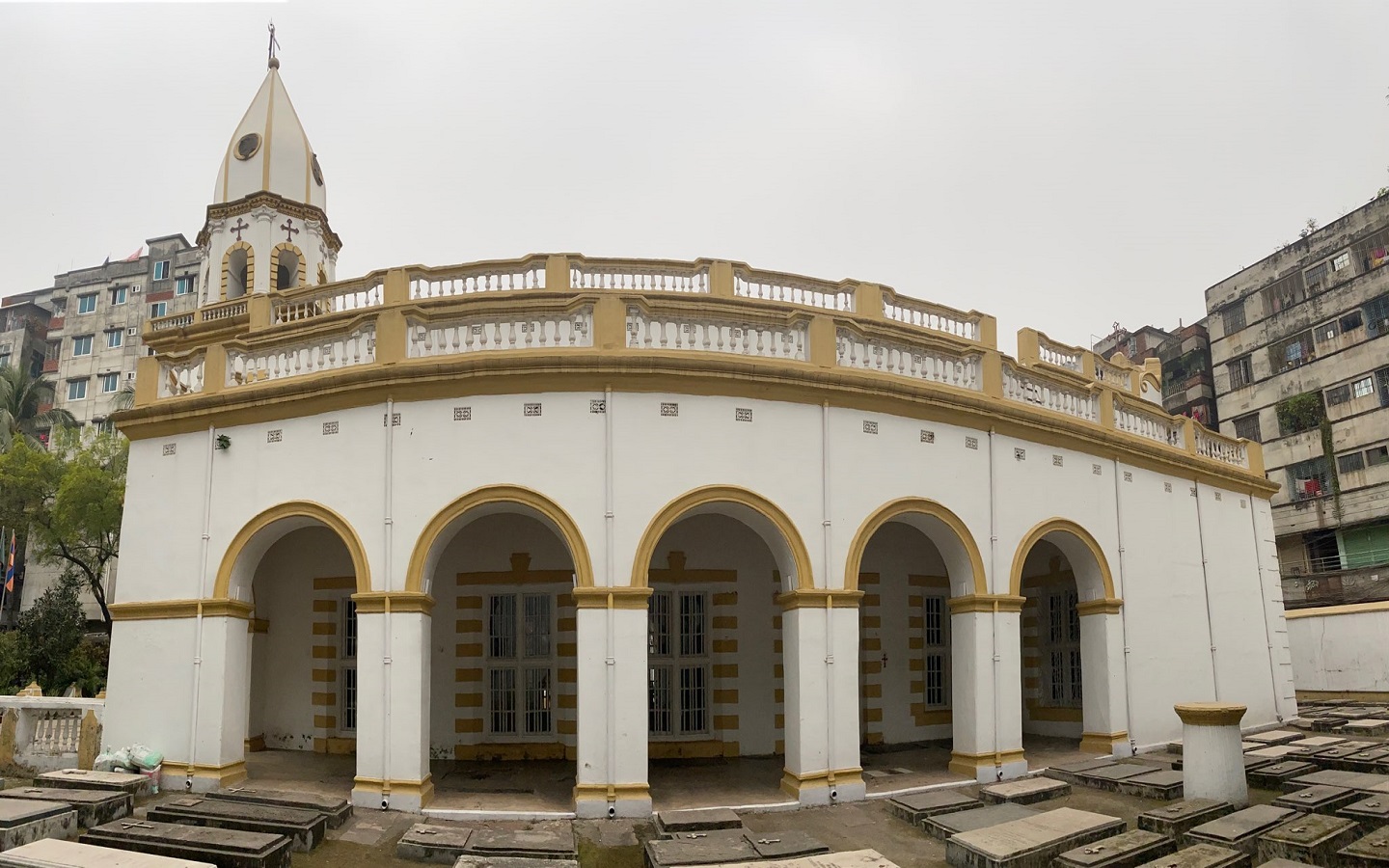
After battling through the hustle and bustle of Armanitola, I reached the beautiful gold and white gates of the Armenian Church. It looks a bit foreign, with the words ‘Armenian Church, 1781’ inscribed on a plaque on the gate. Being almost 300 years old, the structure had an ancient essence to it, which could be felt when standing in front of it. In his book ‘Dhaka: Smriti-Bismritir Nogori’, historian Muntassir Mamoon stated, “Before the construction of the church, there was a small chapel. And surrounding this chapel was a cemetery for Armenians. In 1781, the decision to make a church was taken, and after construction was finished, six graves of the cemetery fell within the bounds of the church.”
Nowadays, congregations do not take place in the church. As a result, visitors can’t take a look at the interior of the church. They will be limited to the cemetery, balcony, and the exterior. But the exterior of the church itself is magnificent. The white and gold colors of the church give out a peaceful and holy ambience. In the midst of many graves inside the cemetery, you will find the grave of Nicholas Pogose, founder of the renowned Pogose School. Almost all the tombstones are written in Armenian and English.
Armenians traders came to Bengal in the 18th Century. They were in the salt, leather, textiles, and jute trading businesses, and slowly became influential in Dhaka. The area that they resided in became what we now call Armanitola. And in there, they constructed the beautiful Armenian Church so that the people who live there have a place for worship. After the creation of the British Raj, when the East India Company left, the businesses of the Armenian community slowly began to falter. After the partition of India, most Armenians left Dhaka. But to this day, the Armenian Church remains a symbol of their presence in the city. And this is why it is considered to be one of the most historic churches in Bangladesh.
St Thomas Church
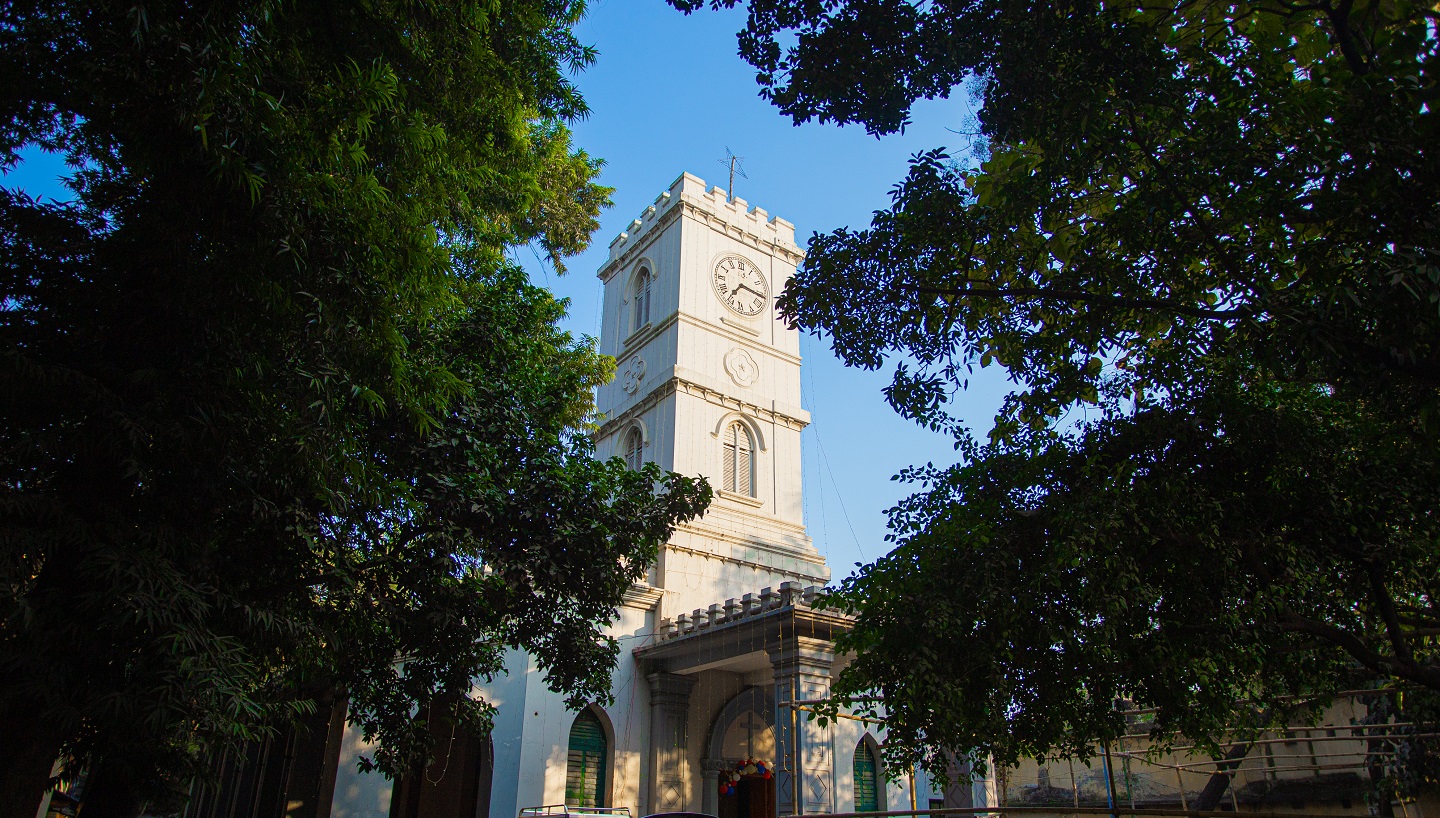
The first time that I came across this church, I found it on the British Library website. An unnamed photographer took a beautiful photo of this church, located in Old Dhaka. As soon as I saw the picture, I rushed to Old Dhaka to see this place for real.
The first thing that I noticed after I stepped into the St Thomas Church premises is the large clock at the top of the church. The facade of the church has an antique feel to it. Its architecture resembles that of most other Anglican churches built in the Indian subcontinent during the 19th Century. Most of the things still at the church have been here for over 200 years, and they are still functioning properly. The clock is the only exception, with it not being in working order anymore.
The church, located on Johnson Road near Shankhari Bazar, is one of the oldest churches in Dhaka. During company rule in India, many British employees and workers of the East India Company settled here. And this church was built to serve their need for worship. St Thomas was one of the proponents of the spread of Christianity in India. And to commemorate this, this church was named after him. The iconic clock of the church was placed in 1863.
Historian Muntassir Mamoon said in his book ‘‘Dhaka: Smriti-Bismritir Nogori’, “In 1819, labor provided by the inmates of Dhaka jail helped build this church.”
Oxford Mission Church
The locals call the Oxford Mission the ‘Red Church’. And when I visited the church located in Jibananda Das Road, Barisal, I could see why they call it that. The church is completely red, top to bottom. But it is surrounded by lush greenery.
Built in the Greek architectural style, this church is one of the oldest out of all the churches in Bangladesh. And also one of the most famous. The church has one large hall, multiple doors, and 40 archways. It is also surrounded by many palm trees, and a field decorated with numerous trees, along with gardens filled with plants, flowers, and herbs. The large prayer hall is the main attraction of the church. It has an altar that is adorned with marble imported from Kolkata. The interior has been exquisitely designed with wood carvings and marble floors. The huge cross inside the church was brought in from Bethlehem in Palestine. The church was also built using locally sourced red bricks. There’s also one large pond on the southern side. Covering a total area of 35 acres, the church area also has 13 other small ponds. Another notable sight in the church is its bell tower, and the giant bell housed inside it, which is rung before prayer time.
The church is officially known as the Oxford Mission Epiphany Church, and it was inaugurated on the 26th of January, 1903. And on the same day, the Epiphany Sisters’ Society was founded. The 114 year old structure is one of Barisal’s most historic landmarks. The church was first sketched up by Sister Edith, and then built under the supervision of Father E. L. Strong, who was the chief of the Brotherhood of Epiphany. The church, built by engineer Frederick Douglass, spans 50 feet in height. The church is still in great condition, as a result of proper maintenance.
St. Nicholas Church
This church is one of the oldest churches in Bangladesh, being constructed in 1663 by Portuguese traders. It was then rebuilt in 1888. When the Portuguese traders first settled in Gazipur, they built this church with permission from the Mughal Emperor, Jahangir. Later, in 1680, they built a brick building, and established the St. Nicholas Church. After that, further expansions were made to the church. A magnificent statue of Jesus Christ was placed in front of the church. Many tourists come from far and wide to see this church. But the newly renovated structure might surprise many with its modern look.
This church has been the place of many historic events in Bangladesh. The first ever translation of the Bible in Bengali was published here. It was also the place where the first ever book in Bengali was published. The structure of the church is supported by 12 steel pillars. It has an entrance that leads to a small corridor, a congregation hall, an altar, and a prayer room. But the engravings and carvings done by the Portuguese have been largely replaced by Bengali craftsmen. The church has been maintained well, and is in very good condition.
Holy Rosary Church
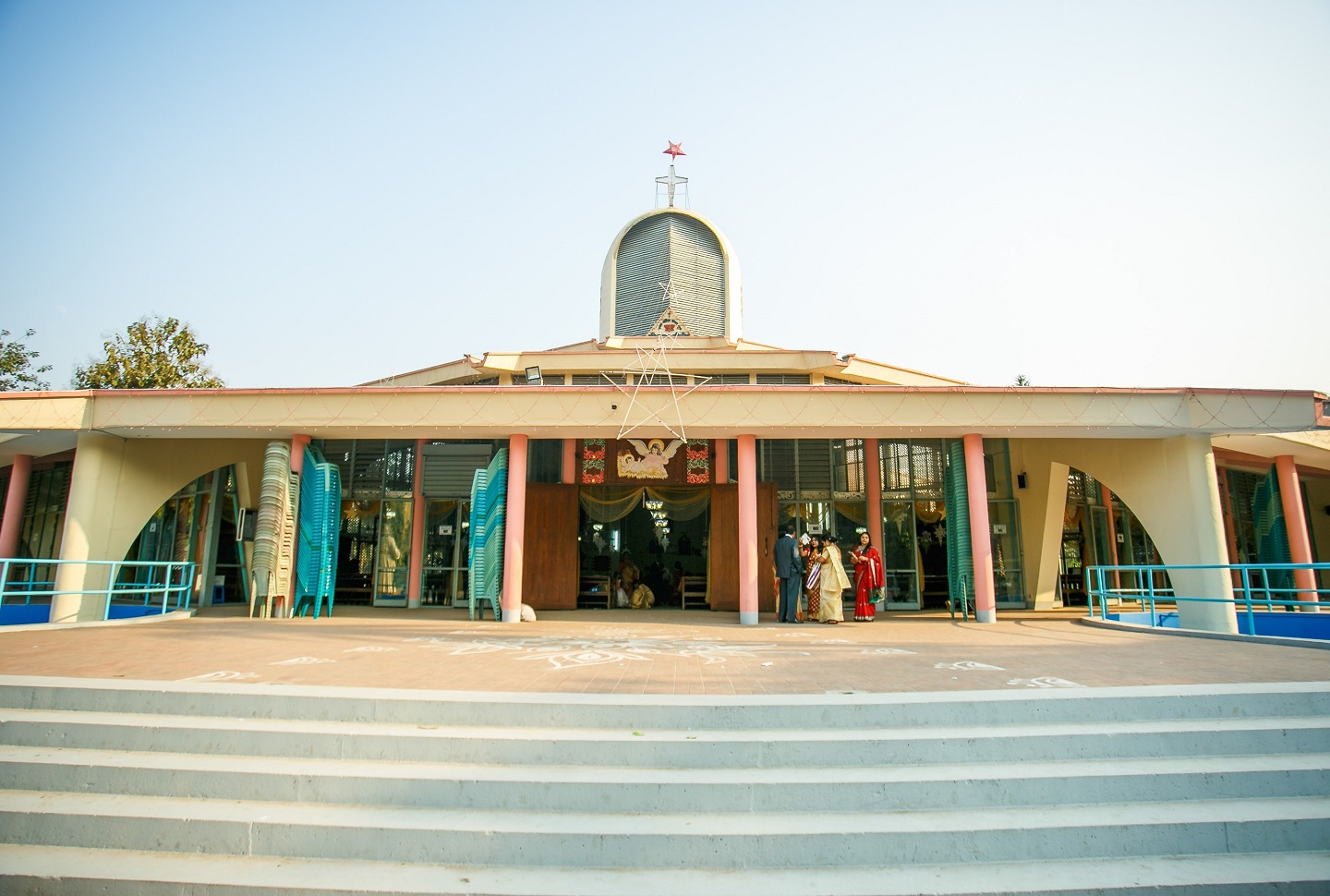
This is one of the most iconic churches in Bangladesh, and was built by Portuguese missionaries. It is located in Tejkunipara in Tejgaon, right next to Holy Cross Girls School and College. The white and blue church is one of Dhaka’s historic sites.
The Portuguese first settled in Dhaka in 1580. They created a trading post here, along with a chapel. And that chapel is said to be the origin of this church. But there’s a debate between historians, travelers, and priests about its exact date of origin. Historian James Taylor says that this church was established in 1599. He said that it was built by Nestorian Christians, and then it was reformed by Catholic missionaries. The date of establishment for the Holy Rosary Church was stated as 1599 in an 1845 article of the Kolkata Review. Another historian, J.J.A. Campos, states the date of establishment as 1697. The Archdiocese of Goa says that it was established in 1714.
The Jesuit Father Antai de Megalhice said that the church was not initially built as a church. It was a chapel at first, built by the Nestorians, and located on the western side of the current church. First, a 0.7 meter tall altar was constructed. And then a prayer hall was built. Then the Catholics came in and built the eastern part of the church. The difference between the eastern and western part of the church was visible, as the construction styles were different. The bells of the church ring every morning and evening.
In the first part of the series, we looked at some of the most historic churches in Bangladesh, along with the stories behind their formation. If you’re interested in seeing what these churches look like, you can go visit them. But be aware of the fact that these churches are places of worship, so behave accordingly. If you want to know more about the historic churches of Bangladesh, or have anything to add to this topic, do tell us in the comments. And stay updated with our new series, ‘A Look Back At History’, for more articles like this.

